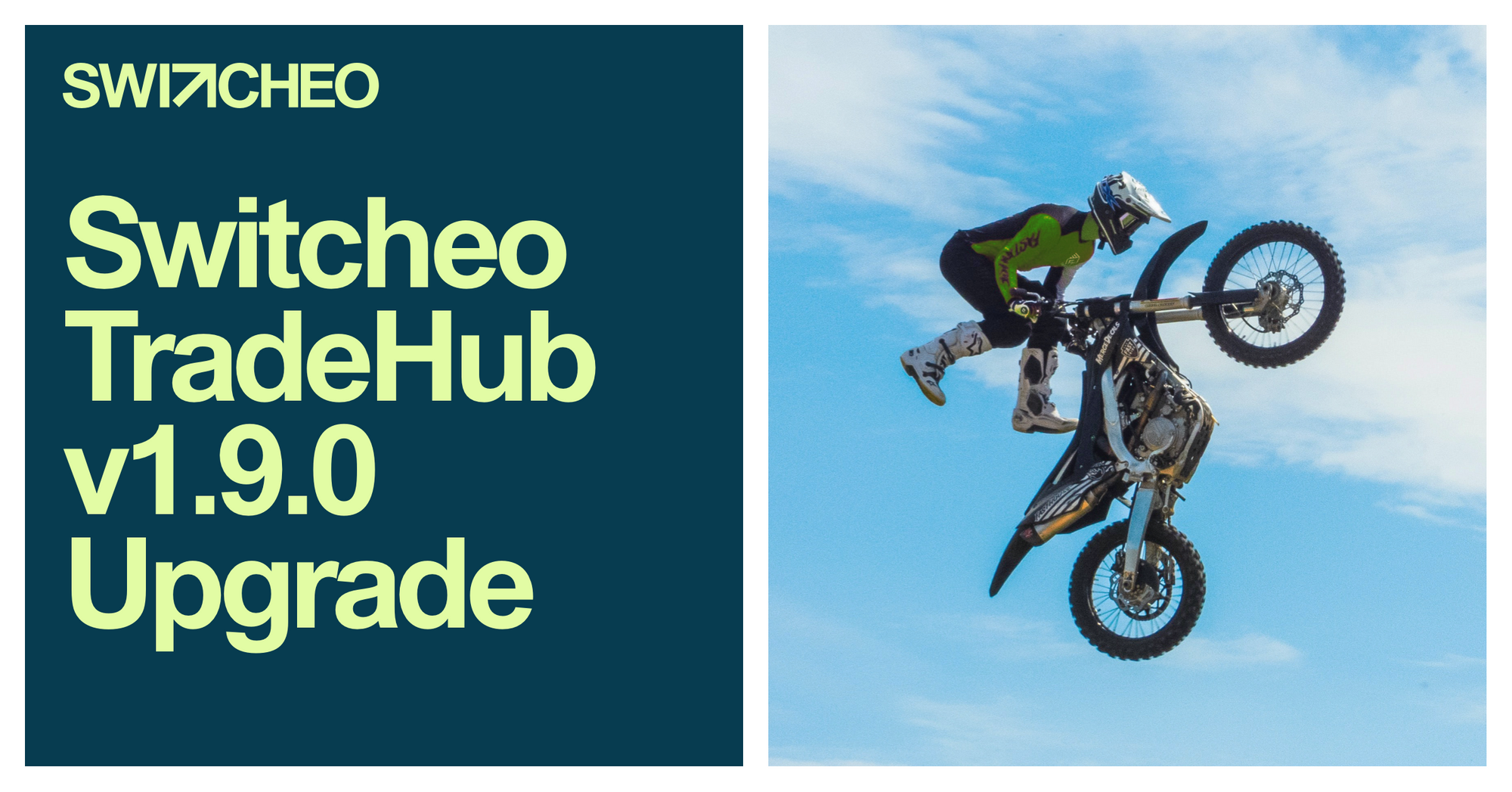*Liquidity pools and rewards have since been updated and extended to March 2022.
We’re drawing close to the commencement of trading on Switcheo TradeHub! In the lead up to the trading launch, the Switcheo core team has released the latest v1.9.0 node software upgrade.
This software upgrade has been proposed via on-chain governance today, 9th December 2020. If passed, validators must complete the pre-upgrade steps by block height 5,115,000, estimated to occur on 16 December 2020, 4am UTC.
What Does the New Upgrade Entail?
The v1.9.0 upgrade will bring forward the launch of trading on Switcheo TradeHub originally scheduled for Phase 2 of TradeHub’s rollout. It will enable users to:
- Deposit and withdraw all Ethereum and Neo tokens that have been added to Switcheo TradeHub
- Propose new markets
- Propose new tokens
- Take part in liquidity pools by adding liquidity, earning rewards, and proposing new pools
- Trade spot markets with automated market makers (AMMs)
- Trade vanilla futures markets
Initial Markets
Once validators have successfully completed the upgrade, trading will be enabled on Switcheo TradeHub! An initial 3 spot market pairs will be available for trading with the corresponding liquidity pool enabled:
- SWTH/ETH - SWTH 20% / ETH 80%
- SWTH/USDC - SWTH 20% / USDC 80%
- ETH/WBTC - ETH 50% / WBTC 50%
More markets and pools can be added through on-chain governance in a permissionless manner.
Liquidity Pool Rewards
All spot markets on Switcheo TradeHub will be supported by liquidity pools and automated market makers (AMMs) which allows liquidity providers to earn through maker rebates, optional swap fees, and additional incentives (described below).
To bootstrap liquidity pools at launch, the v1.9.0 software upgrade will enable various reward schemes to be implemented. This is done through defining a reward curve that distributes a portion of block rewards to liquidity providers as an additional incentive.
In the initial bootstrapping period, we will set the reward curve to award 30% of block rewards to liquidity providers for 12 weeks. This percentage will decrease by 10% every week to 0%. This can be changed at any time, or extended after the initial duration ends, through on-chain governance.
Liquidity pools for each market pair can also have differing reward weights, which will determine how much of the reward is distributed to each pool.
The reward weights* will initially be set as follows:
- SWTH-20 / ETH-80: 33.33% (2x)
- SWTH-20 / USDC-80: 50% (3x)
- ETH-50 / WBTC-50: 16.67% (1x)
For example, assuming the total rewards obtained in Week 1 is $1000, the the 3 pools will accrue $333.33 (33.33% x $1000), $500.00 (50% x $1000) and $166.67 (16.67% x $1000) respectively. Rewards for each pool will then be distributed to liquidity providers pro-rata by their share of contribution to the pools.
*These reward weights have since changed. Visit our latest blog post for the most updated weights.
As an additional incentive for liquidity providers to commit liquidity in a sustained manner, a boost curve can be set through the software update which rewards liquidity providers who commit their LP tokens for a longer period of time.
For example, assume Alice and Bob are the only contributors the SWTH-20/ETH-80 pool, and they contribute an equal amount of liquidity. Alice and Bob are therefore each entitled to 50% of the pool reward. However, Alice chooses to commit her LP tokens for the maximum duration of 12 weeks, while Bob commits his LP tokens with a duration of 0 days (none). Alice’s effective contribution to the pool will be boosted by the maximum multiplier of 3x (i.e. she will be deemed to have contributed 3x her actual amount to the pool), and she will be allocated 75% of the pool reward, while Bob is allocated 25%, even though they both contributed the same notional amount.
How Exactly Do Liquidity Providers Earn?
There are 2 ways that liquidity providers can earn. The first is through earned fees from contributing to liquidity pools, and the second through liquidity pool rewards when LP tokens are committed.
| Earnings | Do NOT commit LP tokens |
Commit LP tokens |
|---|---|---|
| Earned fees from maker rebates |
Earned fees from maker rebates are redirected back into liquidity pools, growing the value of the pools. LPs pool share remains constant, thereby increasing the value of every LPs pool value as well. |
|
| Liquidity Rewards | X | 30% of block rewards and the SWTH inflationary supply decrease by 10% every week. used for trading, transaction and network fees. |
| Boost | X | for a longer duration of time (maximum duration of 12 weeks). |
Rewards accrue with every new block and will only be distributed to liquidity providers when they claim their rewards on Demex. Rewards are distributed in SWTH and other tokens that are used for trading, transaction and network fees.
For example, network fees to add liquidity and commit LP tokens are paid out in SWTH. On the other hand, taker fees distributed to liquidity providers will be based on the tokens of their respective pools. This means that liquidity providers who contribute to the SWTH/ETH liquidity pool will earn taker fees in SWTH and ETH from traders who trade on that market.
The remaining 70% of block rewards not issued as liquidity rewards are distributed to the community tax, validators and stakers.
More to Come!
Spot trading on Switcheo TradeHub will commence soon after the software upgrade and we can already feel the excitement bubbling. The Switcheo team has been actively testing and working on improving the platform in order to create a more seamless trading experience for all our users. Stay tuned to our blog for more updates coming soon!


